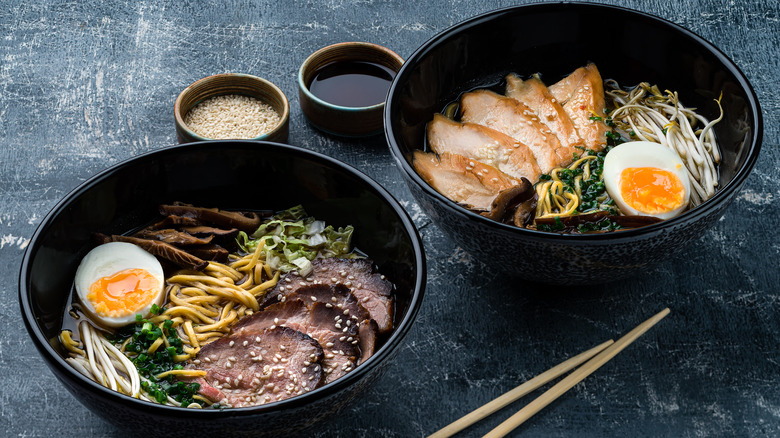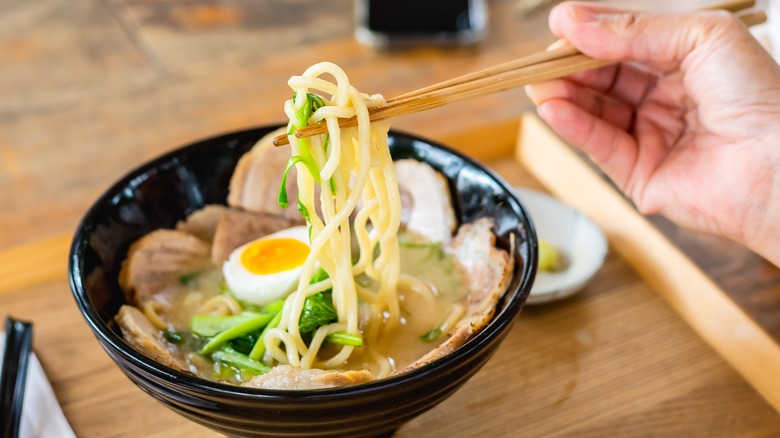What Makes Japanese Ramen Different From Chinese Ramen
The word ramen brings to mind images of large steaming bowls filled with the most flavorful of broths, long noodles perfect for slurping, thinly sliced savory meat, halved soft-boiled eggs, and slivered vegetables.
Ramen is most often associated with Japan, where the noodle dish is served piping hot in restaurants, by street food vendors, and in cafeteria settings. Ramen has become so popular that it not only has become an iconic international dish, but even has museums dedicated to it in the Land of the Rising Sun. But as much as ramen may be associated with Japanese culture, it was actually created by Chinese immigrants working in Japanese soba shops, according to Kitchn. Combining hearty Chinese wheat noodles with savory Japanese broth, ramen gained in popularity during the 1930s in Japan, cites the Kitchn.
In modern day, there are dozens of varieties of ramen served throughout the country and the world. It became part of America's culinary culture during the mid-1960s as dried noodles in plastic wrapping with a flavor packet , shares Ramen Culture. According to Fine Dining Lovers, even Koreans have added their own take on the dish, calling it ramyeon and serve it with kimchi.
Chinese ramen vs. Japanese ramen
Although was invented by Chinese immigrants in Japan, there is still a distinct version of ramen found in Japan. While both Japanese and Chinese ramen are similar in many ways, with both consisting of noodles in a savory broth with a variety of toppings, the Chinese version does not contain Motodare, according to Yamato Noodle Japan. The company describes Motodare as a "base sauce," which is a Japanese ingredient with an umami taste used for buckwheat soba noodle recipes. Motodare can be comprised of ingredients like dried seafood, kombu, and cold water, according to a recipe on Chef Adam Liaw's website.
Another key difference between Chinese and Japanese ramen is how frequently it is seasoned. The large pot of broth for Chinese ramen is only seasoned once in the morning, cites Yamato Noodle Japan, while each serving of Japanese ramen is seasoned and flavored with Motodare and other flavor oils.
What has helped ramen to become an international dish is its adaptability (per Yamato Noodle Japan). Whether it's served with a knob of butter and seafood in the Hokkaido region or bonito flakes and vegetables in Kyoto, ramen recipes can easily incorporate local ingredients and favorite flavors.
So go ahead and add the toppings you like because you can't go wrong when it comes to incorporating your own flair with your bowl of ramen.

